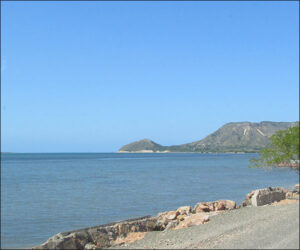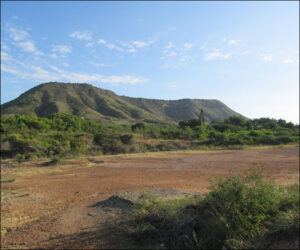Columbus’s fleet departed Samaná promptly after the sailor’s burial on November 23, 1493, sailing west for the settlement he’d named Navidad on the first voyage (near the modern town of Bord de Mer de Limonade, Haiti). He’d left a garrison of men there with Chief Guacanagarí after the Santa María sank on Christmas Day 1492.
On November 25, 528 years ago, the fleet arrived at the mountain promontory Columbus previously had named Monte Christi (Cabo del Morro, Dominican Republic). The ships anchored to its west in the large, sheltered bay where the Yaque River meets the sea (the river retains its Taíno name today).
A search party dispatched ashore found the area unsuitable for permanent settlement but discovered two male corpses near the Yaque. One had a grass rope strung about his neck, his arms had been laid out on a wood piece, and his hands bound to it—perhaps as if hoisted on a cross. The other’s feet were bound. The next day, the search party discovered two more male corpses, one of them heavily bearded, establishing he wasn’t “Indian.” (Columbus had used that word to describe the local peoples in his Journal of the first voyage, believing he’d arrived in the “Indies” near Cathay.)
Columbus had assured everyone—those enlisting on the voyage, Queen Isabella and King Ferdinand, and the voyage financiers—that the Indians were timid and passive. Voyagers now began to doubt that.
The first photo below shows the bay at Monte Christi, the second the promontory itself.


